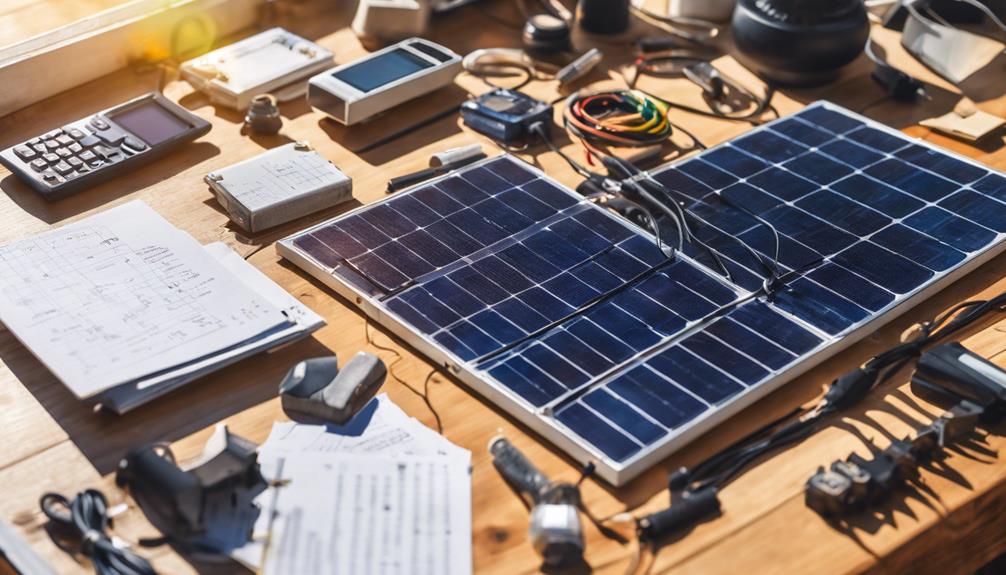
In the journey toward sustainable energy solutions, solar panels have emerged as a popular choice for both residential and commercial properties. However, one key aspect that often confuses potential buyers is the solar panel size. Understanding the appropriate size of solar panels for your energy requirements is essential for maximizing efficiency and minimizing costs. In this comprehensive guide, we will delve into everything you need to know about solar panel sizes, helping you make informed decisions for your solar energy system.
Understanding Solar Panel Sizes: What You Need to Know
When discussing solar panel size, it is crucial to note that it refers not only to the physical dimensions of the panels but also to their power output, measured in watts. Solar panels typically range from 250 to 400 watts in output. The size and wattage of a solar panel will directly impact how many panels you’ll need to generate the desired amount of electricity. For instance, a system with higher wattage panels will require fewer units to meet your energy needs, making size a significant factor when planning your solar installation.
Factors Influencing Solar Panel Size
Several factors play a role in determining the appropriate solar panel size for your property. First, consider your energy consumption. Review your electricity bills to understand your average monthly energy use in kilowatt-hours (kWh). Additionally, consider your geographical location, as solar exposure varies by region. Areas with more sunlight will require fewer panels to achieve the same energy production as regions with less sunlight. Lastly, the roof space available for installation is crucial. Ensure that you have enough space to accommodate the number of panels needed for your energy needs while adhering to local regulations and building codes.
Calculating Your Energy Needs: Finding the Right Solar Panel Size
To determine the appropriate solar panel size, you must first calculate your energy needs. Start by gathering your electricity bills from the past year to find your average monthly energy consumption. Next, convert this monthly usage into daily kWh by dividing by 30. Once you have your daily consumption, you can use the following formula to estimate the number of solar panels you will need:
1. Daily energy consumption (in kWh) / average solar panel output (in kWh).
For example, if your daily consumption is 30 kWh and you choose panels that produce 300 watts (0.3 kWh), the calculation would be:
30 kWh / 0.3 kWh = 100 solar panels.
However, this is a simplified calculation. It is essential to consider factors like system efficiency, shading, and seasonal variations.
Choosing the Right Solar Panel Size for Your Home
When selecting a solar panel size for your home, consider your energy needs, roof space, and aesthetic preferences. If space is limited, you may want to opt for high-efficiency panels that produce more energy per square foot. These panels may have a higher upfront cost but can save you money in the long run by reducing the total number of panels needed. Additionally, consider how the panels will look on your roof; some homeowners prefer larger, less visible panels, while others are willing to sacrifice aesthetics for efficiency.
The Benefits of the Right Solar Panel Size
Choosing the right solar panel size can lead to significant benefits, including lower energy bills and a reduced carbon footprint. When your solar panel system is correctly sized, it will generate sufficient energy to meet your needs, minimizing reliance on the grid and lowering monthly utility costs. Furthermore, a well-sized solar system can increase the value of your property, making it an attractive option for future buyers. Lastly, by harnessing renewable energy, you contribute to a more sustainable environment, reducing greenhouse gas emissions and promoting energy independence.
Common Misconceptions About Solar Panel Size
There are several misconceptions surrounding solar panel size that can mislead potential buyers. One common myth is that larger panels are always more efficient. While size does correlate with output, efficiency also depends on the technology used in the panels. Additionally, some believe that more panels are always better; however, this is only true if they fit within your energy needs and available roof space. It’s essential to conduct thorough research and consult with a solar energy professional to determine the best size and type of solar panels for your specific situation.
The Future of Solar Panel Technology and Size
As technology advances, the efficiency and size of solar panels continue to evolve. Researchers are developing new materials and designs that increase output while reducing the physical footprint of panels. Innovations such as bifacial panels, which capture sunlight from both sides, and solar shingles, which integrate into roofing materials, are paving the way for more versatile solar energy solutions. As these technologies become more accessible, homeowners will have even more options for optimizing their solar panel size and maximizing energy production.
Conclusion: Making Informed Decisions About Solar Panel Size
Determining the right solar panel size is a critical step in harnessing solar energy for your home or business. By understanding your energy needs, evaluating available space, and staying informed about advancements in solar technology, you can make educated choices that lead to long-term savings and environmental benefits. Whether you’re considering a small residential system or a large commercial installation, the right solar panel size will help you achieve your energy goals efficiently and effectively. Engage with solar energy experts to explore the best options tailored to your unique circumstances, ensuring you make the most of the sun’s energy for years to come.
By following this guide, you will be well-equipped to navigate the solar panel market and select the perfect size for your renewable energy needs. Embrace the solar revolution and contribute to a sustainable future!





